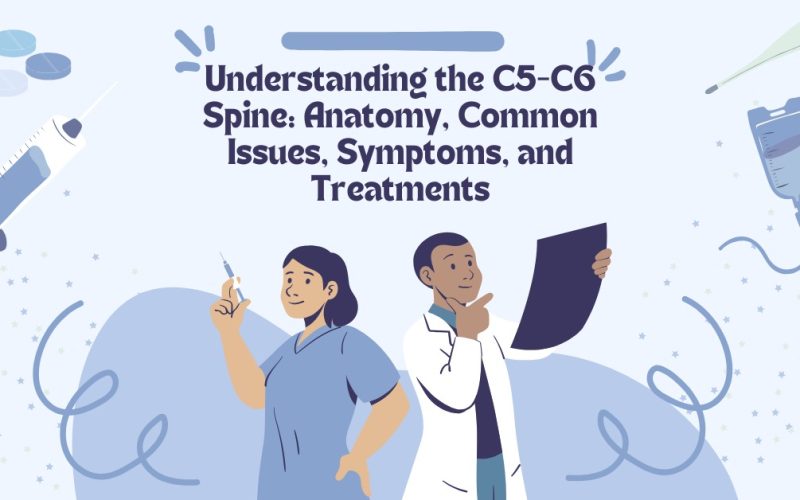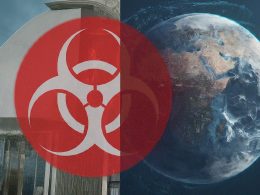The cervical spine, particularly the C5-C6 segment, plays a crucial role in the mobility and support of the neck and upper body. This section of the spine is often the site of injury and degenerative conditions due to its flexibility and constant use. Understanding the anatomy, common problems, symptoms, and treatment options related to the C5-C6 spine can help individuals recognize potential issues early and seek appropriate care. Long Island spine specialists treat herniated discs and spinal injuries.
Anatomy of the C5-C6 Spine: A Vital Segment of the Cervical Spine
The cervical spine is composed of seven vertebrae, labeled C1 through C7. Among these, the C5-C6 segment is one of the most mobile and vulnerable areas. The C5 and C6 vertebrae are located in the lower part of the neck and work together to provide a range of motion, including rotation, flexion, and extension of the head and neck. Issues in the C5 C6 spine often cause neck and shoulder pain.
Between these vertebrae lies an intervertebral disc that acts as a cushion, absorbing shocks and allowing smooth movement. This disc has a tough outer layer called the annulus fibrosus and a softer, gel-like inner core called the nucleus pulposus. The spinal cord runs through the vertebral canal, while spinal nerves exit through openings called foramina on either side. The C5-C6 nerve roots control various muscles and provide sensation to parts of the shoulders, arms, and hands.
Common Conditions Affecting the C5-C6 Spine
Several conditions can affect the C5-C6 segment, often leading to pain, numbness, or weakness in the neck, shoulders, and arms. One of the most common problems is a herniated disc at C5-C6. This occurs when the inner nucleus pulposus pushes through the outer annulus fibrosus, pressing on nearby nerves. This compression causes inflammation and irritation, leading to symptoms such as pain radiating down the arm, tingling, or weakness.
Another frequent condition is cervical spondylosis, also known as neck arthritis. It results from wear and tear of the discs and joints in the cervical spine, causing disc degeneration and the formation of bone spurs (osteophytes). These bone spurs may narrow the foramina, compressing the nerve roots or spinal cord, which leads to pain, stiffness, and neurological symptoms.
Spinal stenosis at the C5-C6 level is a narrowing of the spinal canal that can compress the spinal cord. This condition is often related to degenerative changes and can cause significant symptoms, including difficulty walking and coordination problems in severe cases.
Trauma such as fractures or dislocations involving the C5-C6 vertebrae may occur due to accidents or falls and can cause acute pain and potential neurological damage requiring urgent medical attention.
Symptoms Linked to C5-C6 Spine Problems
Symptoms arising from issues at the C5-C6 level depend largely on whether the spinal cord or nerve roots are involved. The most common symptom is neck pain, which may be sharp or dull and often worsens with movement. This pain may radiate into the shoulder, arm, or hand, often following the path of the affected nerve.
Numbness, tingling, or a “pins and needles” sensation in the arm or fingers may indicate nerve root irritation. Muscle weakness is also common, potentially affecting shoulder abduction or elbow flexion, as these movements are controlled by nerves exiting the C5-C6 region.
In cases where the spinal cord is compressed, symptoms might include difficulty with fine motor skills, balance issues, or even bladder and bowel dysfunction. This condition, known as cervical myelopathy, requires immediate medical evaluation.
Stiffness and decreased range of motion in the neck often accompany these symptoms, making daily activities challenging. Some patients might also experience muscle spasms around the affected area.
Diagnosing C5-C6 Spine Conditions
A thorough medical evaluation is necessary to diagnose problems at the C5-C6 level accurately. The process begins with a detailed history, including the nature of pain, duration, any trauma, and neurological symptoms.
Physical examination focuses on assessing neck mobility, muscle strength, reflexes, and sensory function in the arms and hands. Specific tests may be performed to identify nerve root irritation or spinal cord involvement.
Imaging studies are essential to confirm the diagnosis. X-rays can reveal bone alignment, disc space narrowing, or bone spurs. Magnetic Resonance Imaging (MRI) provides detailed images of soft tissues, including discs, nerves, and the spinal cord, making it invaluable for detecting herniated discs or spinal stenosis.
Computed Tomography (CT) scans can offer additional detail, especially when bony abnormalities or fractures are suspected. In some cases, electromyography (EMG) helps evaluate the electrical activity of muscles and nerves to pinpoint nerve damage.
Treatment Options for C5-C6 Spine Issues
Treatment of C5-C6 spine problems depends on the severity of symptoms and underlying causes. Most patients respond well to conservative management initially.
Physical therapy is a key treatment modality, aiming to strengthen neck muscles, improve flexibility, and correct posture. Therapeutic exercises can reduce pressure on affected nerves and improve spinal function.
Pain relief is often achieved with medications such as nonsteroidal anti-inflammatory drugs (NSAIDs) or muscle relaxants. For more severe pain, short-term use of oral steroids or nerve block injections may be recommended.
Activity modification and ergonomic adjustments help reduce strain on the cervical spine. Patients are advised to avoid heavy lifting and prolonged positions that aggravate symptoms.
If conservative treatment fails or if there is significant nerve or spinal cord compression, surgical options may be considered. Procedures such as anterior cervical discectomy and fusion (ACDF) involve removing the herniated disc and stabilizing the spine, relieving pressure on the nerves. Other surgical techniques include cervical disc replacement or posterior decompression, depending on the specific pathology.
Advancements in minimally invasive spine surgery have improved outcomes and reduced recovery times for many patients.
Recovery and Rehabilitation
Post-treatment recovery focuses on rehabilitation to restore strength and function. Whether treated conservatively or surgically, patients benefit from guided physical therapy to regain mobility, prevent stiffness, and maintain proper spinal alignment.
Long-term follow-up is essential to monitor for recurrent symptoms or complications. Lifestyle changes, including maintaining a healthy weight, avoiding smoking, and practicing good posture, are encouraged to protect the cervical spine.
When to Seek Medical Advice
Individuals experiencing persistent neck pain, radiating arm pain, numbness, weakness, or difficulty with hand coordination should seek medical evaluation promptly. Urgent care is necessary if symptoms include loss of bladder or bowel control or significant motor weakness, as these may signal serious spinal cord compression.
Early diagnosis and intervention improve outcomes and help prevent permanent neurological damage.
Frequently Asked Questions About C5-C6 Spine Issues
What is the function of the C5-C6 vertebrae?
The C5-C6 vertebrae support neck movement, including rotation, bending, and extending the head. They also house nerves that control shoulder and arm muscles and provide sensation to parts of the upper limbs.
What causes a herniated disc at C5-C6?
A herniated disc at C5-C6 can be caused by degenerative changes due to aging, repetitive strain, trauma, or sudden injury that causes the disc’s inner core to push through the outer layer, irritating nearby nerves.
How is a C5-C6 herniated disc diagnosed?
Diagnosis typically involves a clinical examination and imaging studies like MRI, which can reveal the extent of disc herniation and nerve involvement.
Can C5-C6 spine problems cause arm weakness?
Yes, nerve compression at C5-C6 can lead to weakness in muscles responsible for shoulder abduction and elbow flexion, affecting arm movement and strength.
What treatments are available for C5-C6 spine conditions?
Treatment options include physical therapy, pain medications, corticosteroid injections, activity modification, and, in severe cases, surgical procedures such as discectomy and fusion.
How long does recovery take after C5-C6 spine surgery?
Recovery varies by individual and procedure but generally ranges from a few weeks to several months. Rehabilitation plays a critical role in regaining strength and mobility.
Are there ways to prevent C5-C6 spine problems?
Maintaining good posture, regular exercise, avoiding heavy lifting, and managing weight help reduce stress on the cervical spine and lower the risk of developing spine issues.
Conclusion
The C5-C6 segment of the cervical spine is a critical area that supports neck function and transmits nerve signals to the upper limbs. Due to its mobility and anatomical complexity, it is prone to conditions such as herniated discs, arthritis, and spinal stenosis. Recognizing symptoms early and seeking appropriate diagnosis and treatment can prevent complications and improve quality of life.
Conservative management including physical therapy and medication is often effective, but surgery may be necessary in some cases. Ongoing rehabilitation and lifestyle changes contribute to long-term spinal health.
If you experience persistent neck or arm symptoms, consulting a spine specialist can help ensure timely care and the best possible outcomes.Click Here












